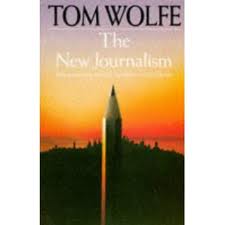Writing a Nonfiction Book: Lessons from Tom Wolfe
Biff Barnes
If you’re looking for a way to tell your story whether it’s fiction or nonfiction you’d be well advised to look at the lessons offered by Tom Wolfe. His nonfiction, which reached its apogee in The Right Stuff, was a prototype for the so-called “new journalism.” His sharp reporter’s eye worked just as well when he began turning out novels like Bonfire of the Vanities and A Man in Full. In his New York Times review of Wolfe’s new novel Back to Blood, novelist Thomas Mallon wrote:

Tom Wolfe’s move from the New Journalism to fiction writing, undertaken a quarter-century ago, now seems on a par with Babe Ruth’s shift from the pitcher’s mound to the regular batting order. But from genre to genre, the fundamentals of Wolfe’s game have stayed the same…
Let’s look today at the time before Wolfe made the shift from the mound to the batting order, the days when he was changing the way true stories were reported. There are some key lessons there for anyone who wants to write good nonfiction.
In the early 1960s, when Wolfe was a reporter for the New York Herald, he was struck he said in New York Magazine, by the notion that “…it just might be possible to write journalism that would…read like a novel.” As he experimented with doing just that, Wolfe said, “What interested me was not simply the discovery that it was possible to write accurate non-fiction with techniques usually associated with novels and short stories. It was that—plus. It was the discovery that it was possible in non-fiction, in journalism, to use any literary device…” The result was a style of reporting that employed scenes, dialogue and interior monologues of the characters. “The idea was to give the full objective description,” he explained, “plus something that readers had always had to go to novels and short stories for: namely, the subjective or emotional life of the characters.”
The resulting genre which emerged from those ideas, creative nonfiction, is now an important part of MFA programs on university campuses across the country.
What is less well understood about Wolfe’s new journalism is that it was rooted in getting the facts right. Said Wolfe, “Only through the most searching forms of reporting was it possible, in non-fiction, to use whole scenes, extended dialogue, point-of-view, and interior monologue.”
Wolfe often got the facts by being a participant observer. He spent six months with novelist Ken Kesey and his Merry Pranksters in a Day-Glo school bus travelling across the country in order to write The Electric Kool-Aid Acid Test, in 1968.

What happens though, when you can’t be there to observe events? You are writing a history, biography, or family history. Events to be portrayed took place in the past, maybe the distant past.
Interviews, an essential tool of new journalists like Wolfe, as well as the more traditional variety, can help. Colorful anecdotes, idiosyncratic ways of speaking, reflections on events from which the interviewee is now removed by some time all provide the stuff of strong literary scenes.
When the participants in an event are no longer available for an interview, gathering material for a dramatic scene is somewhat more difficult. It takes some sound research using the sources that are available
Bob Woodward has been doing it since he hit the best-seller list with All the President’s Men. The American Journalism Review describes how, “In the introduction to The Agenda, [his book on the inner workings of the Clinton White House], Woodward wrote that reconstructed dialogue and quotes came from at least one participant, from memos, or from notes or diaries of a participant in a discussion. When someone is said to have thought or felt something, that description came either from the source or from someone to whom the source said it directly.”
One can’t simply imagine dialogue. One must discover a factual base like the one Woodward describes.
If you are dealing with history the written record provides plenty of ideas for dialogue or insight into the thoughts of a character. Journals, diaries, letters, and newspaper records are only a few rich sources.
The key to the success of reporters like Wolfe is that their goal was always “…to write accurate nonfiction.” Literary techniques produce good nonfiction only to the extent that they are based on the facts. If you haven’t been able to find the facts you hoped for and you speculate about what your character may have said or thought, make sure to tell your reader that’s what you’re doing. It helps you tell your story and helps your reader know that he can trust that story.
Otherwise you’re James Frey not Tom Wolfe.